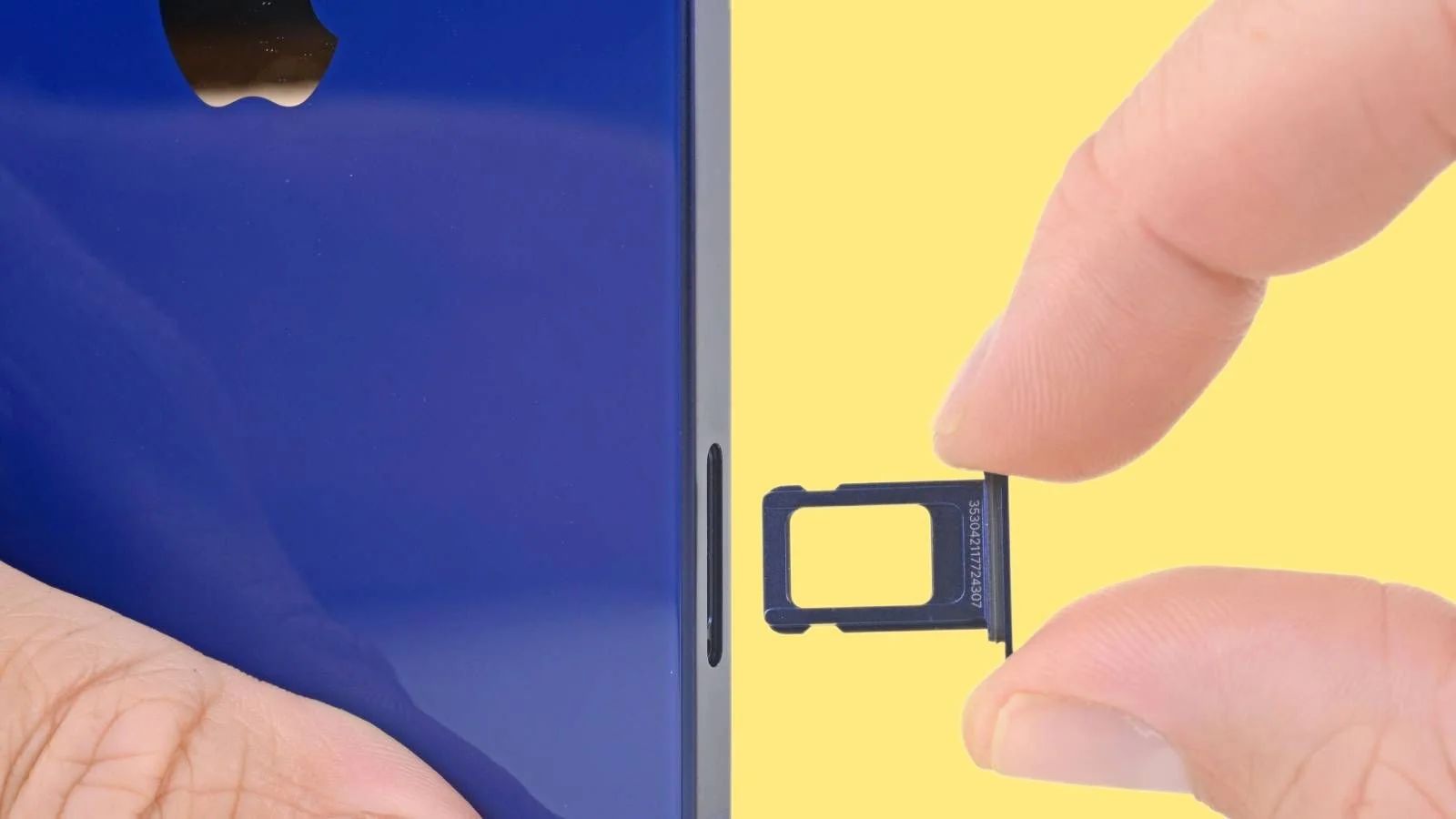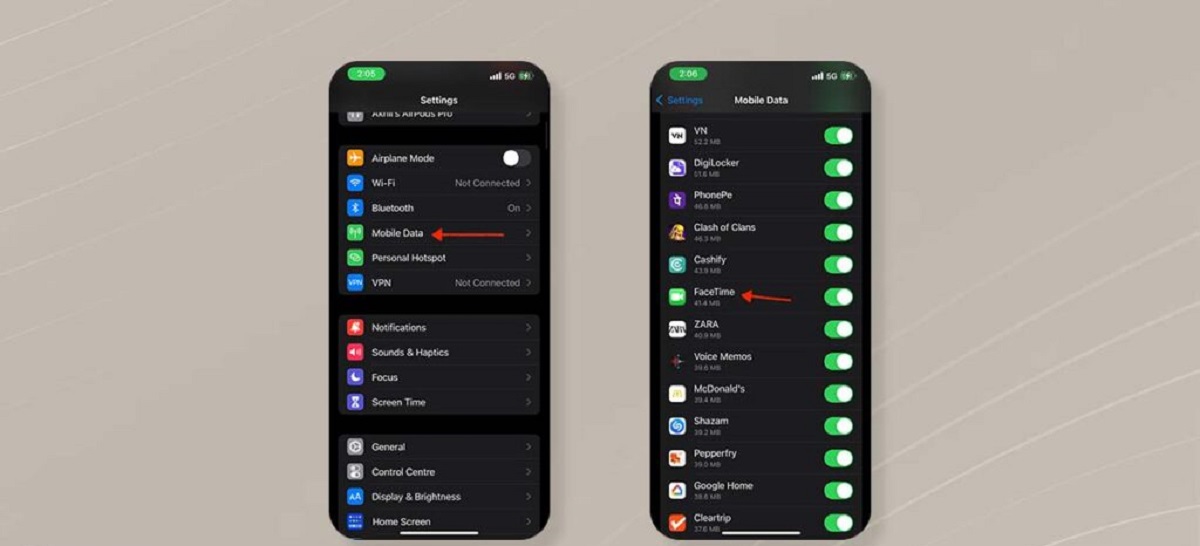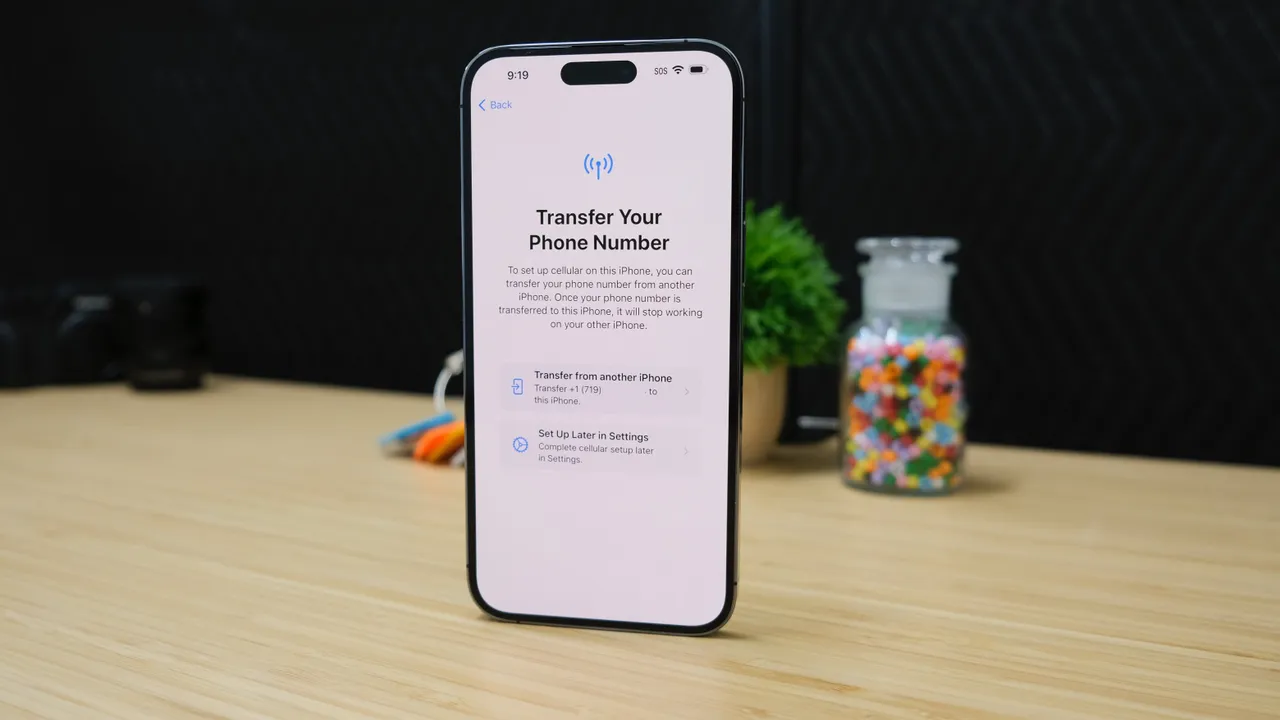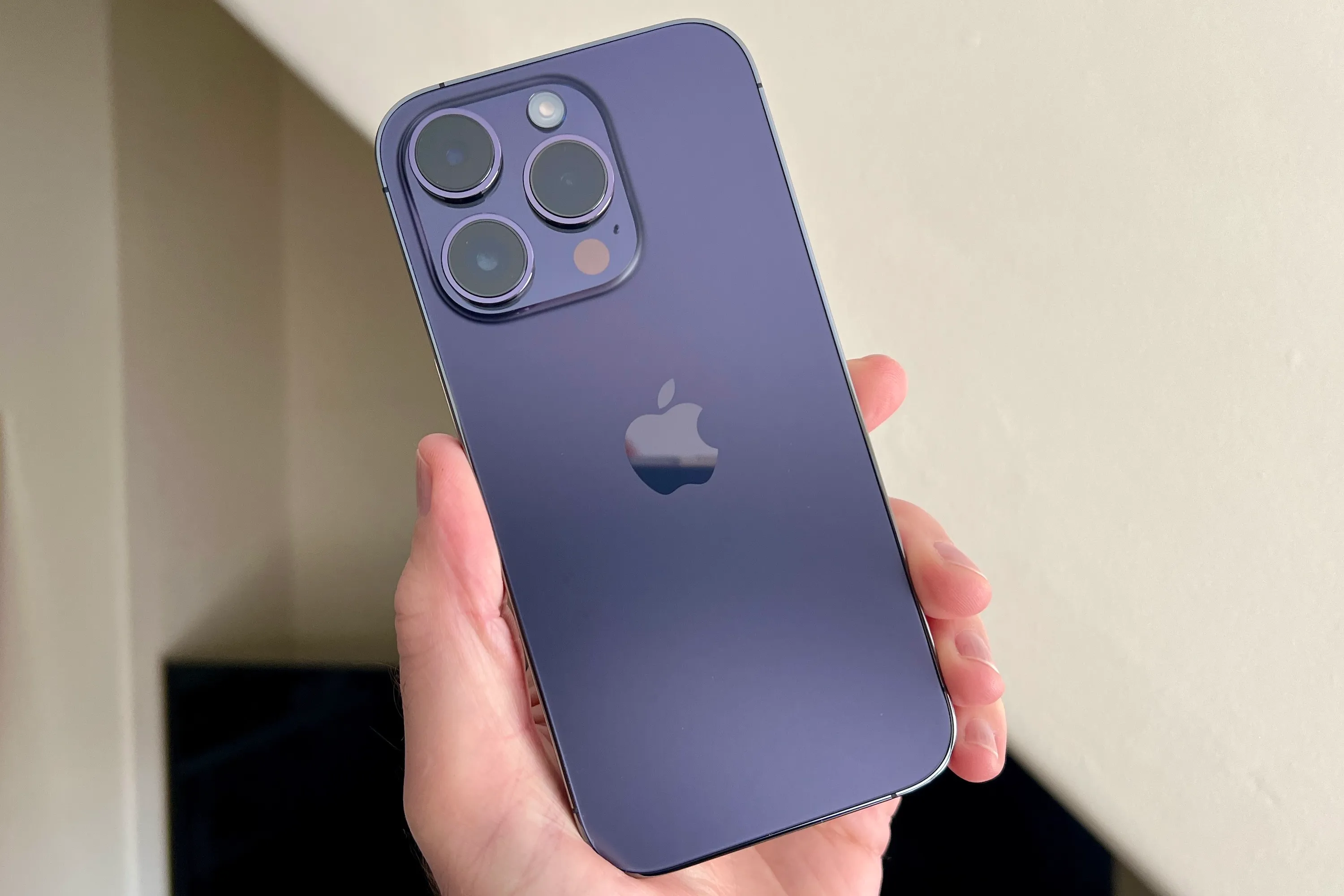Introduction
Mobile devices have become an integral part of our daily lives, revolutionizing the way we communicate, work, and entertain ourselves. With the advent of smartphones and advanced communication technologies, staying connected with our loved ones has never been easier. FaceTime, an innovative video and audio calling service developed by Apple, has significantly contributed to this seamless connectivity. However, many users often wonder if it's possible to use FaceTime without a SIM card.
In this comprehensive guide, we will delve into the world of FaceTime and explore the feasibility of using this popular communication platform without a SIM card. Whether you're an avid traveler, a tech enthusiast, or someone seeking alternative communication options, understanding how to leverage FaceTime without a SIM card can expand your connectivity options and enhance your overall mobile experience.
Stay tuned as we unravel the intricacies of FaceTime and provide valuable insights into maximizing its potential, even without the traditional SIM card. Let's embark on this enlightening journey to unlock the possibilities of FaceTime beyond the confines of a SIM card.
What is FaceTime?
FaceTime is a groundbreaking video and audio calling service developed by Apple, designed to seamlessly connect users across various Apple devices. Launched in 2010, FaceTime has since redefined the way people communicate, allowing them to engage in high-quality video calls and audio conversations with unparalleled ease and convenience.
One of the most compelling features of FaceTime is its integration with Apple's ecosystem, enabling users to initiate calls from their iPhone, iPad, iPod Touch, or Mac. This seamless interoperability fosters a cohesive and unified communication experience, regardless of the Apple device being used.
The hallmark of FaceTime lies in its user-friendly interface and the exceptional clarity it offers during video calls. Leveraging the device's front-facing camera, FaceTime enables users to engage in face-to-face conversations, bridging the physical distance and fostering a sense of closeness, whether for personal or professional interactions.
Furthermore, FaceTime supports both one-on-one conversations and group calls, accommodating multiple participants in a single call. This versatility makes it an ideal platform for virtual meetings, family gatherings, or catching up with friends, amplifying the sense of togetherness in a digital landscape.
In addition to video calls, FaceTime also facilitates high-quality audio calls, ensuring clear and uninterrupted voice communication. This dual functionality enhances its utility, catering to diverse communication preferences and scenarios.
Moreover, FaceTime operates seamlessly over both Wi-Fi and cellular networks, offering flexibility and accessibility in various connectivity environments. This adaptability empowers users to stay connected regardless of their location, making FaceTime a reliable communication tool for individuals on the go.
Overall, FaceTime symbolizes Apple's commitment to fostering meaningful connections through cutting-edge technology. Its intuitive interface, cross-device compatibility, and exceptional audiovisual quality have positioned FaceTime as a leading communication platform, enriching the lives of millions of users worldwide.
Can You Use FaceTime Without a SIM Card?
Yes, you can use FaceTime without a SIM card. Unlike traditional cellular calls that rely on a SIM card and cellular network, FaceTime leverages internet connectivity to facilitate video and audio calls. This fundamental distinction liberates FaceTime from the constraints of a SIM card, offering users a versatile communication platform that transcends traditional telephony.
By harnessing Wi-Fi or a mobile data connection, users can seamlessly initiate and participate in FaceTime calls without the need for a SIM card. This flexibility empowers individuals to stay connected using their Apple devices, regardless of whether a SIM card is present or active.
Furthermore, the absence of a SIM card does not hinder the functionality or performance of FaceTime. As long as the device is connected to the internet, whether through Wi-Fi or cellular data, users can harness the full potential of FaceTime to engage in high-quality video calls and crystal-clear audio conversations.
This capability holds significant implications for users in various scenarios. For instance, individuals traveling abroad can leverage FaceTime to stay connected with their loved ones, even if they do not have access to a local SIM card. This eliminates the need to rely on traditional voice calls and incurring international roaming charges, offering a cost-effective and convenient alternative for staying in touch across borders.
Moreover, users transitioning to a new device or awaiting a replacement SIM card can continue to communicate seamlessly through FaceTime, ensuring uninterrupted connectivity during transitional phases.
The ability to use FaceTime without a SIM card underscores its adaptability and resilience in catering to diverse user needs and preferences. By embracing internet-based communication, FaceTime transcends the limitations imposed by traditional telephony, empowering users to foster meaningful connections without being tethered to a SIM card.
In essence, the answer to whether you can use FaceTime without a SIM card is a resounding "yes." This pivotal feature amplifies the accessibility and inclusivity of FaceTime, reinforcing its position as a versatile and indispensable communication tool in the digital age.
How to Use FaceTime Without a SIM Card
Using FaceTime without a SIM card is remarkably straightforward, offering a seamless communication experience that transcends traditional telephony. Whether you're a globetrotter seeking to stay connected while traveling or a tech enthusiast exploring alternative communication options, leveraging FaceTime without a SIM card can unlock a world of possibilities. Here's a comprehensive guide on how to harness the full potential of FaceTime without the constraints of a SIM card:
1. Activate FaceTime:
- Ensure that FaceTime is activated on your Apple device. Navigate to the device's settings, select FaceTime, and toggle the switch to enable this feature. If prompted, sign in with your Apple ID to associate it with FaceTime.
2. Connect to Wi-Fi or Mobile Data:
- Since FaceTime operates over internet connectivity, ensure that your device is connected to a Wi-Fi network or has access to mobile data. This step is crucial for initiating and participating in FaceTime calls without a SIM card.
3. Add Contact Information:
- To facilitate FaceTime calls, ensure that the contact you intend to communicate with has their FaceTime enabled and their contact information, such as email address or phone number, added to your device's address book.
4. Initiate FaceTime Calls:
- Open the FaceTime app or access FaceTime through the Phone app on your device. Select the contact with whom you wish to communicate and initiate a FaceTime call. Whether it's a one-on-one conversation or a group call, FaceTime offers a user-friendly interface to seamlessly connect with your contacts.
5. Enjoy High-Quality Communication:
- Once the call is initiated, revel in the exceptional audiovisual quality offered by FaceTime. Engage in immersive video calls or crystal-clear audio conversations, fostering meaningful connections regardless of the absence of a SIM card.
6. Explore Additional Features:
- Delve into the array of features offered by FaceTime, including the ability to switch between the front and rear cameras, apply fun effects and filters during video calls, and seamlessly transition from FaceTime calls to traditional voice calls if needed.
By following these simple steps, you can harness the full potential of FaceTime without a SIM card, expanding your communication horizons and embracing the flexibility offered by internet-based connectivity. Whether you're communicating with friends, family, or colleagues, FaceTime transcends the limitations of traditional telephony, offering a versatile and intuitive platform for fostering meaningful connections.
This comprehensive guide empowers users to leverage FaceTime without a SIM card, unlocking a world of seamless communication possibilities and reinforcing the adaptability of Apple's innovative communication service.
Troubleshooting Tips
Encountering technical hiccups during FaceTime usage can disrupt the seamless communication experience that this innovative platform aims to deliver. However, armed with the right troubleshooting tips, users can swiftly address common issues and ensure uninterrupted connectivity. Here are essential troubleshooting tips to navigate potential challenges and optimize your FaceTime experience:
-
Check Internet Connectivity: Verify that your device is connected to a stable Wi-Fi network or has adequate mobile data coverage. Inconsistent or weak internet connectivity can hinder the quality of FaceTime calls, leading to audiovisual disruptions.
-
Update Device Software: Ensure that your device's operating system is up to date. Software updates often include bug fixes and performance enhancements that can address compatibility issues and improve the overall stability of FaceTime.
-
Verify Contact Information: Double-check the contact information of the individual you intend to communicate with via FaceTime. Ensure that their FaceTime is activated and that you have the correct email address or phone number associated with their account.
-
Restart FaceTime: If you encounter connectivity issues or experience audiovisual anomalies during FaceTime calls, consider restarting the FaceTime app. This simple action can refresh the application and resolve temporary glitches.
-
Reboot Device: In cases of persistent connectivity issues, consider restarting your device. A reboot can clear temporary system errors and restore optimal functionality, potentially resolving underlying technical challenges affecting FaceTime.
-
Check Do Not Disturb Settings: Review the Do Not Disturb settings on your device to ensure that FaceTime calls are not inadvertently being blocked. Adjusting these settings can prevent missed calls and ensure seamless communication.
-
Review Firewall and Network Restrictions: If you are using FaceTime in a corporate or institutional environment, verify that network restrictions or firewall settings are not impeding FaceTime functionality. Consult with your network administrator to address any potential restrictions.
-
Contact Apple Support: If persistent issues persist despite following the aforementioned steps, consider reaching out to Apple Support for personalized assistance. Apple's support team can provide tailored guidance to address complex technical challenges and optimize your FaceTime experience.
By adhering to these troubleshooting tips, users can proactively address common technical issues and maximize the potential of FaceTime as a versatile communication platform. These proactive measures empower users to navigate potential challenges with confidence, ensuring that FaceTime remains a reliable and seamless avenue for fostering meaningful connections.
Conclusion
In conclusion, the advent of FaceTime has revolutionized the landscape of communication, offering a versatile and intuitive platform for users to engage in high-quality video calls and audio conversations. Through our exploration of using FaceTime without a SIM card, we have unveiled the remarkable flexibility and accessibility that this innovative service embodies.
The ability to use FaceTime without a SIM card amplifies its inclusivity, catering to diverse user scenarios and preferences. Whether it's connecting with loved ones while traveling abroad, transitioning between devices, or embracing internet-based communication, FaceTime transcends the limitations of traditional telephony, empowering users to foster meaningful connections regardless of geographical boundaries or SIM card constraints.
Furthermore, the seamless integration of FaceTime across various Apple devices underscores its commitment to cohesive connectivity, fostering a unified communication experience that transcends individual devices' limitations. This interoperability amplifies the utility of FaceTime, ensuring that users can effortlessly transition between their iPhone, iPad, iPod Touch, or Mac while maintaining a consistent and immersive communication experience.
By providing a comprehensive guide on using FaceTime without a SIM card, we have equipped users with the knowledge and insights to harness the full potential of this groundbreaking communication platform. From activating FaceTime to troubleshooting common issues, our guide empowers users to navigate the intricacies of FaceTime with confidence, unlocking a world of seamless communication possibilities.
Ultimately, FaceTime's resilience in operating without a SIM card reinforces its position as a leading communication tool that transcends traditional telephony, offering a dynamic and inclusive platform for fostering connections. Whether it's a heartfelt conversation with a family member, a virtual meeting with colleagues, or a lighthearted catch-up with friends, FaceTime stands as a beacon of connectivity, bridging distances and nurturing relationships with unparalleled ease.
As we embrace the boundless potential of FaceTime without a SIM card, it becomes evident that this innovative service embodies the ethos of connectivity, adaptability, and inclusivity, enriching the lives of millions of users worldwide. With its exceptional audiovisual quality, seamless cross-device integration, and unwavering commitment to user experience, FaceTime continues to redefine the art of communication, transcending boundaries and fostering meaningful connections in an ever-evolving digital landscape.

























